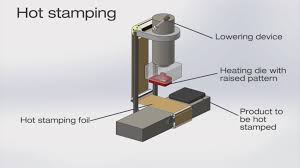HOT FORMING POLYCARBONATE: PROCESS, ADVANTAGES, AND APPLICATIONS
Hot forming polycarbonate is a modern and optimized processing solution for handling polycarbonate sheets in various industries. This method uses heat and pressure to create sharp, precise details on the surface, enhancing both the aesthetics and durability of the product. This forming process not only meets strict technical requirements but also expands its applications in construction, advertising, and industrial manufacturing, delivering outstanding efficiency.
Hot Forming Polycarbonate: Process, Advantages, and Applications
In today's plastic manufacturing industry, hot forming polycarbonate is an essential technique. This process helps produce durable, aesthetically pleasing, and precise products.
It not only customizes each product step by step but also optimizes its application across many industries. Let’s explore the details of this efficient forming process.
Importance in Manufacturing
Hot forming polycarbonate plays a crucial role in processing and finishing plastic products, especially polycarbonate sheets. This method allows for the creation of beautiful details, logos, or images on material surfaces, enhancing the aesthetic appeal and brand value of the product.
During the forming process, polycarbonate sheets are treated at high temperatures and pressure, ensuring that designs are deeply and precisely integrated onto the surface.
This is the best solution for producing durable plastic products that meet both technical and artistic requirements. It also helps improve brand recognition, which is essential in construction, advertising, and industrial production.
Process Overview
Hot forming is a critical processing method that uses heat and pressure to press a foil, usually metallic or printed, onto plastic or other materials.
In this process, an engraved mold is heated to activate the adhesive layer of the foil, allowing it to bond tightly with the product surface. This process can be performed automatically or manually, making it adaptable to various production scales and requirements.
Step-by-Step Hot Forming Process
1. Design Preparation
- Artwork Creation: Develop the design or logo to be embossed using graphic design software (e.g., Adobe Illustrator, CorelDRAW).
- Mold Making: Convert the design into a metal mold with etched patterns (using etching or laser engraving) to ensure accuracy when imprinting on the substrate.
2. Material Selection
- Foil Selection: Choose the appropriate foil type based on color requirements, finish (matte, glossy, metallic, or holographic), and composition (aluminum, pigment, or polymer-based).
- Substrate Selection: Select the material to be embossed, such as paper, plastic (polycarbonate), leather, or other surfaces. Polycarbonate products benefit from their heat resistance and strong adhesion properties.
3. Hot Forming Machine Setup
- Mold Installation: Load the engraved metal mold into the hot forming machine.
- Foil Placement: Position and align the foil precisely with the mold and substrate.
4. Hot Forming Execution
- Mold Heating: The mold is heated to the appropriate temperature for the foil and substrate type.
- Substrate Positioning: The polycarbonate sheet or other material is placed correctly under the mold.
- Pressing: The heated mold is pressed down, applying sufficient pressure to transfer the foil onto the surface. Heat activates the adhesive layer, ensuring the foil adheres securely to the substrate according to the desired design.
5. Cooling and Quality Inspection
- Cooling: After forming, the product is naturally cooled or processed through a cooling system to ensure firm adhesion of the foil.
- Quality Check: Inspect the finished product to verify design uniformity, cleanliness, and foil adhesion quality.
6. Final Product Finishing
- Cleaning: Remove any debris or excess foil.
- Additional Processing: Additional steps like cutting, folding, or packaging may be performed depending on the product’s application.
Advantages of Hot Forming for Plastic Components
✔ Versatility: Applicable to various materials and plastic products, from electronics to automotive components.
✔ High Precision: Ensures accurate designs and sharp details, crucial for branding and aesthetics.
✔ Clean Process: Uses foil instead of liquid ink, reducing mess and eliminating the need for extensive cleanup, unlike screen printing.
✔ Durability: Creates long-lasting results that withstand harsh conditions, essential for wear-resistant products.
Challenges and Innovations
Challenges:
Small Text Limitations: Printing very small text can be difficult; alternative solutions like pad printing or laser engraving may be more suitable.
Complex Shapes: Forming on non-flat surfaces is challenging but can be improved using silicone-based forming molds.
Innovations:
Digital Printing Integration: Combining digital printing with hot forming allows for faster design changes without creating new molds.
3D Metallic Foils: Increasingly popular due to their unique visual effects, widely used in security features and high-end packaging.
Contact us now for detailed quotes and expert consultation!
GREEN ROOFING CO., LTD
Hotline: 0932 06 6699 - (028) 6681 7799
Email: info@greenroofing.vn
Website: www.greenroofing.vn



